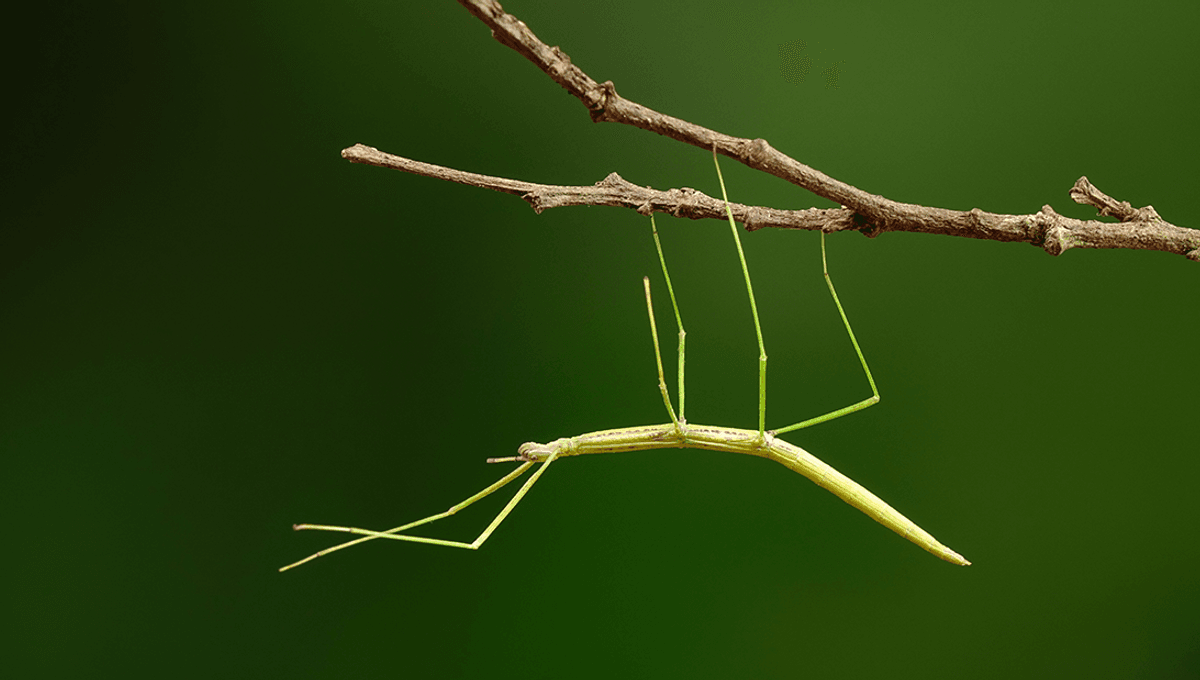
A new study examining stick and leaf insect species has found evidence of convergent evolution, with all of the insects evolving similar characteristics despite diverging long ago.
Convergent evolution is when similar features that have a similar form or function evolve in species from different periods or regions, despite the last common ancestor of the species not having that particular feature. Think how echolocation has evolved in both whales and bats, and mechanisms for flight evolved in birds, insects, pterosaurs, and bats. (Side note: Get your own evolutions, bats, quit hogging up everyone else’s).
Think also of how several different animals have evolved prickly protrusions, including echidnas (of the monotremes), tenrecs, and hedgehogs (Erinaceinae). Despite appearances, the last common ancestor of the latter two was likely in the time of the dinosaurs; they just ended up with similar characteristics.
Convergent evolution essentially happens when animals and plants have to adapt to similar environments or ecological niches and end up with similar solutions. Crab-like forms are thought to have happened independently at least five times in decapod crustaceans, including porcelain crabs, hairy stone crabs, and coconut crabs. This particular form of convergent evolution has spawned its own meme, with people joking that everything, eventually, becomes a crab.
In the new study, from biologists in Montana, USA, and Germany, the team looked at 1,359 insects from 212 stick and leaf insect species, measuring them and comparing their characteristics, in an attempt to gain a little more understanding of how convergent evolution works.
“Phasmids (stick and leaf insects) exemplify the extraordinary power of natural selection to shape organismal phenotypes,” the team explained in their study. “The animals themselves are charismatic champions of crypsis and masquerade; and our characterization of their adaptive radiation reveals dozens of instances of convergence, as lineages adapted to similar changes in habitat by repeatedly evolving similar body forms.”
Looking at the insects, they found that they evolved similar characteristics that help camouflage them against their environment and keep them hidden from predators, from their head and body shape, and a “lobster-like” appearance seen in the “tree lobster” stick insect.
The team found that characteristics such as body shape tended to be more similar in creatures that shared an ancestor, even if the species diverged long ago. As well as this, the environments that the insects evolved in played a huge role in their evolution, with evolution finding similar solutions to similar problems.
“Our findings show that the similarity of environmental conditions experienced by the organisms – the closeness of the invaded niches – and the extent of elapsed time since divergence, both predict the strength of morphological convergence,” the team explained. “The phasmid radiation reveals an evolutionary process that is surprisingly predictable, even when lineages have been evolving independently for tens of millions of years.”
While some body forms were seen across a number of species, others were found to be unique.
“The chinchemolles (clade Agathemeridae) and the wide leaf mimic (clade Phylliidae) ecomorphs each had unique origins and were therefore evolutionary one-offs. Chinchemolles, as originally named by native South Americans, are fat, robust and smooth insects adapted to the arid slopes of the Andes range and known for their foul defensive smell,” the team explained. “All other ecomorphs appeared to have originated at least twice (e.g., small crawler ecomorph) and up to at least 10 times (e.g. thin stick ecomorph), indicating widespread morphological convergence in the order.”
The team believes that the study, which they say is the largest ever on stick and leaf insect convergent evolution, could help us to understand convergent evolution better, or even help predict the path of evolution. For this, they suggest that biologists should look closely at the environments themselves as well as the time since species divergence.
“Our findings show that the details of the environmental conditions experienced by the organisms – the closeness of the invaded niches – predicts the extent of convergence even when lineages have been evolving independently for tens of millions of years, and therefore have had ample opportunity for contingency,” they write in their conclusion. “Furthermore, we show that the effects of contingency also are relatively predictable, gradually eroding the strength of convergence at a steady rate across spans of up to 60 million years.”
The study is published in Proceedings of the National Academy of Sciences.
Source Link: "Extraordinary Power Of Natural Selection": Convergent Evolution Found In Hundreds Of Stick Insect Species